Resources
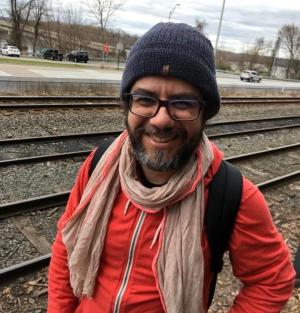
This semester I am on sabbatical and I decided to shift some gears in my scholarship. I have depended so much on a certain scholarship for my teaching that I feel now another world is opening for me. Since I opened myself to a different relationship with the earth, one of allowing myself to be affected by it, so many things are happening to me. I have always been eager to know everything I can learn about what I hear, touch, and see. My library is way too big and what could have been my retirement is now composed of shelves packed with books. For a few years there has been something growing in me that tells me to slow down that eagerness and sheer desperation. A while ago I lost 1,600 computer files with all my texts, books, scholarship, research, which was devastating. I was thrown into a place of fear, grief, anger, and loss. I felt like I had nothing to rely on. After a long period of reflection, I now wonder if it was my own unconscious telling me: enough with that, that eagerness, that desperation to know. I started pondering my reasons for hiding under those unfulfilled desires. Was I trying to cover up everything that I actually don’t know and am so afraid people will discover about me? What was this desperate need to try to know everything? I am still wrestling with it. And let me say, books haven’t stopped arriving. But now that I am trying to figure out how to pay attention to the earth, I have more to learn and more to read and have to pay attention differently. There is something in me now that is closer to joy than obligation when I read, when I research, when I teach. As I move closer to the earth, I am trying to do what the Brazilian song says: “Caress the earth, know the desires of the earth.” As I do this I am getting closer to myself and whole new worlds are opening up. And that means other ways of learning, teaching, relating. As I learn with indigenous people that the earth is always inhabited by doubles and multiples and other natural and social relationships, I am discovering the joy of my symbiotic being and keep pondering what it means to live in these forms of world relations. My spirituality, always so much dependent on modern forms of thinking, is now becoming freer, as I search for untapped forms of my own traditions and other wisdoms and ways of being. I feel I need to know the world through my belly button, through my intuition, through my perception, but how do I do that? This discovery is pushing me to a world of feelings and sensations, experiences and knowing, that are pretty much anathema for proper scholarship. But I am allowing myself to feel with other beings in ways that I never allowed myself to do and be before. I am gaining the company of other thinkers: other theologians, artists, anthropologists, biologists, geologists, and indigenous thinkers guide me. It was during COVID-19 that the idea of a play came to me. It started with a visitation from my father who was a fantastic artist with a combination of many gifts: a musician, a clown, a theater actor, a song writer, a movie buff, an inventor of games, a poet. During my daily walks I felt his presence. He came to me as a clown and a question started to circulate in my head and my body: How can we engage climate catastrophe, devastation, and grief using humor and laughter? What if a clown walked around the earth figuring out its disasters, sadness, and losses and responded like a clown with naiveté, stupidity, awkwardness, lightness, and humor? Since then, the idea of a play has stayed with me. I have written a script and am looking for funds. But how do we raise funds when all we know in academia is about writing books, editing books, articles, journals, and so forth? Furthermore, the word “clown” is a red nose, oops, a red flag to any serious scholarship. I tried applying for scholarships from the usual places I know to no avail. They all look for innovative thinking, but let us be honest, even the word innovative has limits. Clowning? Really? A friend who proofread my proposal asked, “Do you really need to use the word ‘clown’?” It was a great question and I laughed. Fundraising seeming hopeless, I started to save money. I asked my school for help, and I am getting great support which I am so grateful for, and I feel blessed. But this project will need more money and I am trying in every way I can to get some. I decided to include students and created a class on humor, laughter, and performance in order to do this through pedagogical lenses. I will teach this class with a musician and scholar from the Ifá tradition in Brazil. Here is the course proposal: Humor and Laughter: Resilience and Resistance Across Religious Traditions To be able to laugh, be humorous, and silly are tremendous ways to resist, show love/compassion, and affirm life at a time when depression, anger, sadness, climate catastrophes, and disasters of all kinds are piling up. This course focuses on the following resources of world sense: the Russian Christian tradition of the Holy Fool, Indigenous traditions of Coyote, Afrodiasporic oralities present in the sacred Itan of Ifá, and the multiple presences of Exu with the recognition of the coexistence of positive and negative forces. This course is a theoretical-practical introduction to religious humor and laughter through musical improvisation, sound sculpture, dance, and ritual-performance integrating the senses with the environment. The course will end with a collective performance/play called When Pachamama Meets Gaia. This course is taught by religious teachers/performers who have their foundations crossed by the religious traditions of Christianity and Ifá. Now I need to catch up with my own ideas and proposals. The syllabus is on the way but the most difficult thing now is practicing so my clown can come to life. Next time I will say more about the show and the processes of transformation I am having to go through in order to do this.
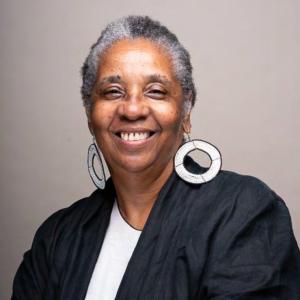
Part One: Ritual Is Communal Learning. We might agree that “community” is a dynamic, divine dance among individuals who, at any given moment, can structure and normalize what might have begun as a spontaneous, enlivening interaction. Community, in the context of our classrooms, can either be a routinized structure of interactions, focused on a set of pragmatics (time allotted, prescribed lessons/topics, inherited answers to repeated questions), or a generative experience, full of imagery and ideas that are liberative to the spirit. In other words, we can create community to fulfill a set of accepted structures about learning, or we can create a space that courageously “touches the spirit.” This is the point of ritual, to touch the spirit, and it involves everyone in the space together experiencing the divine dance. Rituals, when seeking to connect meaningfully to the essence of our being, becomes a point of teaching and learning within the moment. I believe that there are such experiences of ritual in every culture because even as we are human, we are divine. Both aspects of our being desire existence. For those of us in theological education, we have the privilege to focus on both the human and the divine as a responsibility of teaching those called to do spirit work. Ritual invites the community of bearers and seekers to experience this transcendent work together and receive the benefits of communal learning to touch the divine within us together. Part of our challenge is operating in an ecosystem that pays more attention to rules and structures than the divine dance, trusting in our own aptitude and the genius of the spirit to decentralize oppressive rules and structures. My communities called me forth to be a keeper of the ritual. It was not until they gave voice to my “medicine” that I accepted it and began to develop it. Rituals became the first task when I settled myself into class preparation. I would find spaces to just listen. The listening would take even longer when I saw names of learners that I had in a previous class. It was much later that I realized that this listening was paying attention to ancestral voices whose “sight became my vanguard voice.” Ritual not only enlivened the purpose of the course beyond the accumulation of information, but it also afforded each one of us to sit with our individual social location in ritual as an opportunity for personal value in the communal space. With the ritual, we were measuring our worth based upon course content in relation to our lived experiences. We were adding value to the community by our existence and the value of being connected to one another. As I think about the adults who entered those classroom spaces and the complexity of their lives, the ritual space also became a moment of releasing and accepting without having to speak to the specifics of what was/would be going on. This is the healing aspect of ritual. Rituals create space for communal recovery and discovery. Rituals create space for rest. Do I require everyone in attendance to engage the ritual? I do not. Even for those who, in their own way, do not participate in the class rituals, they bear witness to it. And what we do know, is that you cannot unsee what you see, and you cannot unhear what you have heard. This is also the reason why ritual work is a deeply intentional and serious work. It is not an icebreaker or a gesture of novelty. This is an assurance: the presence of a person at the ritual affords them a chance to speak to the spirit.
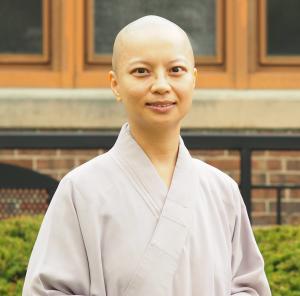
One of my courses is a first-year tutorial designed to fit in with the college-wide objectives to develop new students’ basic academic skills, including writing, critical reading, and oral communication. It also involves individually advising new students to navigate their learning journey until they declare their major field of study. Because the course has multiple goals, it took me a long time to think about an appropriate topic to connect college students’ academic success with their personal lives. I also facilitate students’ embodied learning in their first year. What strategies can I teach them that will enhance their learning progress while adjusting to a new school environment.When designing my course, I found Tammy J. Freiler’s view of being attentive to the entire body as a way of whole-person learning to be helpful. She argues that embodiment is an approach “to construct knowledge through direct engagement in bodily experiences and inhabiting one’s body through a felt sense of being-in-the-world…. It also involves a sense of connectedness and interdependence through the essence of lived experiencing within one’s complete humanness, both body and mind, in perceiving, interacting, and engaging with the surrounding world.”[1] The statement of “complete humanness” inspired my tutorial course topic, “Mindfulness: The Art of Living,” in which I guide students to develop a sense of physical and mental awareness.This is not a meditation course. Instead, the class uses mindfulness as a subject of study. Students study Jeff Wilson’s Mindful America (Oxford, 2014) to build reading, writing, and presentation skills. They also learn how to evaluate the credibility of online resources. While I guide students to take an active role in learning and exploring their academic interests, I encourage them to incorporate mindful practices into their professional performance and everyday life. Teaching the tutorial not only helps me critically reflect upon how to develop a more holistic view of education, but also makes it clear that the traditional approach to teaching mindfulness focuses primarily on the mental aspect, which creates some pitfalls. Although establishing mind-body interaction is the goal, it is easy to neglect the living body as a medium for knowing and connecting with the surrounding world. Several questions and challenges arise, and I have learned at least two noteworthy points about embodied learning. Providing practice-based learning opportunities is not enough. Active engagement is the key to triggering embodied experiences. This notion is too obvious to be overlooked. My first day teaching this class was a bit challenging, in part because it was ironic to guide a discussion about “mindfulness” when students were sleepy. The class started at 8:00 am, a time when young learners felt a lack of energy. Attempting to address this, I added two-minutes of mindful listening (to the natural sounds of birds singing or forest stream), combined with three minutes of relaxing body movement. In theory, this should have been beneficial and meaningful. Some students, however, did not find it useful. Why? The critical element is engaging with the doing and being immersed in the activity. It takes practice to hone one’s mindfulness and cognition. Students cannot gain any constructive effects unless they develop exactly their own whole-body practice, bringing sensory organs and the mind together.Learning space matters, but students may not be mindful of their interactions with the external world. Being at a residential college, all full-time students are required to live on campus, thus there are very few clear boundaries between living and studying spaces. How can I help students develop their bodily awareness in academic environments and beyond? I ask students to write a journal to observe their study habits and in what ways they learn the best. The main concern is whether their bodily activities are related to a learning task in a meaningful way, or not. In addition, I have them pay attention to where the most effective locations that enhance their productivity are, to help students think about how environments affect their cognitive process. Some students report locations where they feel less anxious while doing homework, including the Spencer Grill (a café), the atrium at the Human and Social Studies Center, and outdoors. None of them mention their dorm rooms. Students’ reflections are meaningful, as they develop their bodily awareness on campus, acknowledge the body as a basis for their being in the world, and create a personal connection with their surroundings. Teaching first-year students about mindfulness allows me to reflect that learning involves embodied cognition. Although most agree that mindfulness is a practical approach to dealing with day-to-day issues, not everyone values the importance of being attentive to the body. They tend to take their physical presence for granted, and aren’t aware of body experiences as a way of knowing. Thus, it is my responsibility to guide students to develop cognitive awareness, which can subsequently help them appreciate mind-body integration as a powerful tool to enhance productive learning. [1] Tammy J. Freiler, “Learning Through the Body.” New Directions for Adult and Continuing Education 119, (2008): 40, DOI: 10.1002/ace.304.
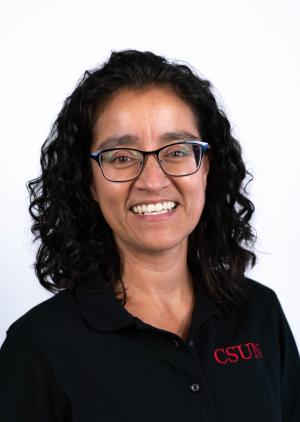
I was asked for pictures of me while teaching in the classroom. An organization I’m part of wanted them for one of their platforms and I obliged. I asked a student to use their phone to take pictures of me during one of our class sessions. I asked them to do it discreetly so the pictures could be as candid as possible. And boy were they candid—and revealing! I was rolling laughing as I saw myself in all kinds of animated postures: down on one knee, face looking upward, arms outstretched toward the sky; all manner of facial expressions and creative hand gestures; nutty drawings of giant circles and spirals on the chalkboard as I tried to explain who-knows-what concept. It was a surprise to me that my teaching style was so animated and a bit dramatic. And while it amused me to see this about myself, it did not make me self-conscious, for even though I had not realized this about myself, my students surely had known me this way the whole time. I got to see what my teaching looked like a little better and know that while there is no single way to teach, I surely had mine. The larger point, of course, is that there is no blueprint to how we embody our teaching, and the more we understand this and understand ourselves, the better we can move into our own. I had received an earlier lesson on embodiment the very first time I presented a paper at the annual meeting of the American Academy of Religion (AAR). I hated every minute of my first paper presentation: I hated the podium—how much it blocked my sense of connection with the listeners and made me feel like I could not see everyone clearly. I hated the microphone because it meant I couldn’t move about and I had to stand on my tiptoes to try and keep it at the right level. I hated reading the paper because it meant I was the only one speaking that whole time. It was a stressful and miserable experience. The following year, then, when I was to take part in a commemorative panel scheduled in one of the very large presentation rooms at AAR, I knew I had to find a way to change my experience of presenting. Through a friend, I received acting coach tips to help me feel more comfortable and confident about presenting. The advice in a nutshell was to experiment and play with the embodiment of the activity: practice being at the podium, around it, in front of it; explore ways to change my spatial relationship with the listeners, the paper, the microphone. Play with time, pauses, moments of possible interactions with the listeners, even if not explicitly verbal. She told me to listen to what my body was telling me through its discomfort—what exactly was not working? —and to explore ways to address and attend to the cause of the experience. I should accept that presenting in the traditional way did not work for me and explore and play with various adjustments and shifts to discover the approach that did work for me. Effectively, she released me from the idea that there was a single blueprint for conference paper presentations and encouraged me to bring myself, mind and body, to discover my own. In my last post I wrote that “we teach humans, not subjects,” and argued that in our teaching it is important to attend to the humans before us first and foremost. It is likewise important to attend to ourselves, to who we are in the wholeness of our mind and body, and to allow ourselves to feel and sink into the embodiment of the teaching relationship. Teaching is relational as much as it is embodied. And it takes some experimenting to find one’s grounding within them both. But before receiving the tips from the acting coach, I received an invaluable tip from a student that has remained with me since my first week as a professor. The Faculty Development team at my university invited students to join the new faculty for lunch and an informal Q & A during the new faculty orientation event. I asked the student sitting at my table, “If you could give one piece of advice to new faculty, what would that be?” He said, “Let us see you as human, sometimes. Be ok showing us your ‘non-professor human side’; it helps us relate to you better.” I always remember that tip—it reminds me that it is okay to bring my peculiar, embodied self to the relational activity of teaching and to give myself permission to sink into it, even with its flair and dramatic gestures. What’s yours?
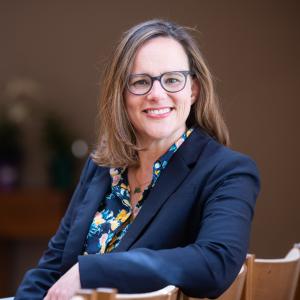
It was a spectacular morning on Emory’s verdant quad. The early October air was just offering the hint of crispness that announced the imminent arrival of fall. The grass, roped off for re-seeding (a detail some students thought revealed loving care for the soil and others thought revealed a desire to control a manicured landscape), shimmered a dewy electric green. The oak trees’ leaves were beginning to flaunt their autumn gold, offset by an expanse of sky the color of a robin’s egg. But then, I noticed two students were standing off to the side of the rest of the class, whispering to each other, smiling, and almost giggling. All my self-preservation alarm bells hard-earned in junior high started going off. What are they laughing at? Is it me? Am I doing or saying something stupid? It was the “Religious Education and Our Ecological Context” class, and we’d come out to the quad on an October morning to discuss and try to practice Sallie McFague’s use (which she borrows from Marilyn Frye) of the concepts of the “loving eye” and the “arrogant eye” when encountering nature.[1] When beholding nature with an arrogant eye, we look upon it as an object, something separate from ourselves for our use and convenience. When beholding nature with a loving eye, we acknowledge its mystery and relationship to us, appreciating it on its own terms. The students were divided into two groups, each of which assumed the point of view of the arrogant eye or the loving eye and asked to make notes of what they saw or encountered in the quad from that point of view. Some students bounded off in pairs or trios, chatting and pointing out what they saw to their classmates, while others slowly wandered off quietly by themselves, pens and notebooks in hand. A couple of students lingered near me, asking a question about an upcoming assignment, perhaps not entirely comfortable with this task of just being in their bodies outdoors. I often incorporate such embodied and contemplative learning experiences, particularly in this class. In fact, the students also were asked to choose a location, near where they live, to observe for five minutes daily. They were invited to marshal all their senses to make note of all the changes in that place as the semester slid from late summer into fall, and then winter. A few weeks earlier, we visited an art installation by Charmaine Minniefield at Emory’s Carlos Museum, Indigo Prayers: A Creation Story. In that work, Minniefield powerfully uses pigments indigenous to Gambia, where her ancestral roots are found, to visually represent the “ring shout,” a dance of prayer and resistance. In these seven very large paintings, installed in such a way that they move slightly as one walks past, the artist’s own body is represented. The paintings tell an embodied story of the relationship between the self and place (and displacement), mirroring a theme for our class. All of this is to say that in this class, which considers the spiritual and moral relationship of the self (and the community) to particular places and to the “more-than-human world,”[2] I have intentionally built in embodied pedagogies to open up paths of knowing perhaps not available in more didactic or even discursive classroom activities. I made this decision on sure theoretical and pedagogical footing: Donna Haraway and Lorraine Code both argue for a more expanded epistemological framework, appreciating the role that embodied and emotional experience play in the production of knowledge.[3] And yet, as we were gathering back to talk about the experience, I was distracted by the two students standing very near me who seemed to be having a laugh at my expense. I immediately began to second guess my choice to bring the class outdoors. My inner voice began shouting at me: “This is graduate school for God’s sake! Get serious!” (I suspect that my inner voice comes from the same place as Stephanie Crumpton’s, also featured in this blog series: “Even worse, I hear my own voice telling me, ‘You’re dumbing it and yourself down. Folks [including yourself] need to step it up.’”) I didn’t want to put the students on the spot, but they made eye contact with me as I opened up the discussion. I paused, and one of them said, “We were just saying how much we like it that you take us on ‘field trips.’” They were happy. Now, I can’t say that knowing this fact erased my self-doubt. Indeed, there’s some small part of me that still believes seriousness and joy are somehow in tension with each other, and learning should be serious. As the conversation unfolded, however, a tapestry was woven that incorporated all the students had beheld on the quad, and the ways in which McFague’s categories accounted for (or didn’t) the ways in which we were relating to the more-than-human world in this moment. I revealed more of my pedagogical rationale for being out there, the principle of embodied learning as a pathway to ecological knowing, though we’d discussed that principle before in the ordinary classroom. As we walked back to the building, the students were animated, talking about the ways in which they might incorporate similar practices in their field sites or other settings. And we were happy. [1] Sallie McFague, Super, Natural Christians: How We Should Love Nature (Minneapolis, MN: Augsburg Fortress, 1997). [2] Abram uses this phrase to appreciate the animacy of the natural world, and to avoid objectifying dualism. David Abram, The Spell of the Sensuous: Perception and Language in a More-Than-Human-World (New York, NY: Pantheon Books, 1996). [3] Donna Haraway, “Situated Knowledges: The Science Question in Feminism and the Privilege of Partial Perspective,” Feminist Studies 14, no. 3 (1988): 575–599; Lorraine Code, Ecological Thinking: The Politics of Epistemic Location (New York, NY: Oxford University Press, 2006).
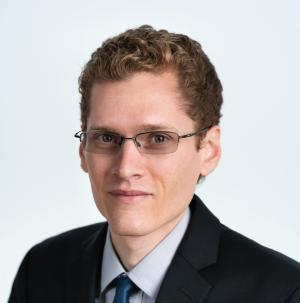
When was the last time you had a student visibly start paying more attention because of something you said? What were you saying? What were you doing with your body? One of the things I do that most consistently causes certain students to perk up is reference other languages. When trying to define theology I compare it to the Spanish Dios, which is a lot closer to the Greek theos than the English “God.” Similarly, the Spanish iglesia sounds a lot like the Greek ekklesia (it derives from it via Latin), which is useful for helping students remember what ecclesiology is, even if the spellings are different. My students are used to teachers and professors introducing new vocabulary by referencing the roots of the words, and similar words, in English. Their bodies, the surprise on their faces, tell me they find it shocking to hear Spanish and other non-English languages used in the classroom. However, the bodies that make up my students reflect a need for a multilingual focus. According to the U.S. Census Bureau, sixty-six million Americans (21.5%) live in households where a language other than English is spoken. Most, of course, also speak English. This reality is reflected in our classrooms. In a recent term, my 130 students collectively spoke Arabic, Dutch, French, Gaelic, German, Gujarati, Hindi, Italian, Japanese, Korean, Mandarin, Polish, Portuguese, Punjabi, Spanish, Tagalog, Ukrainian, and Vietnamese. At one school where I taught, 26% of my students were multilingual to some degree. In a larger city, at another institution where I served, 49% of my learners claimed two or more languages. I don’t know how these numbers reflect the broader campus communities of the universities where I teach, or the percentages in higher education as a whole. However, language is central to learning. How can we teach well if we don’t consider what languages our students speak? How can we design curriculum if we don’t consider their cultural and linguistic backgrounds? How can we help them develop their proficiencies in their other languages if we are not open to incorporating other languages in our teaching? This is not just an issue of pedagogy. It’s an issue of justice. We invest a lot in helping white students learn a second language in school, but typically devote minimal resources to helping native speakers learn to read and write in their non-English languages. At worst, we bar them from using their native language(s) out of the utterly mistaken (so says the research) conviction that doing so helps them learn English faster. Believing that students who grew up speaking Spanish or Polish or Arabic should be able to read and write in those languages by the end of college should not be a radical or rare position. I imagine some of the surprise of my using Spanish and other languages in class is that, as a white person, I don’t look like I should speak them. They’re not wrong. I’m a product of the U.S. education system. A native English speaker, I am functionally monolingual despite having studied Spanish, German, and biblical Greek. That doesn’t mean I can’t find ways to signal that I know my classrooms are populated by multilingual students. This might mean making comparisons to words I know in other languages. Or, providing students non-English editions of required readings. Or, encouraging students to use their other languages when conducting research. The tongue is part of the body. Language is part of embodied teaching. If I want to embrace my students’ identities, using their languages is a good place to start. It is a counter-imperial gesture, one that challenges the hierarchy of languages that equates English with power.
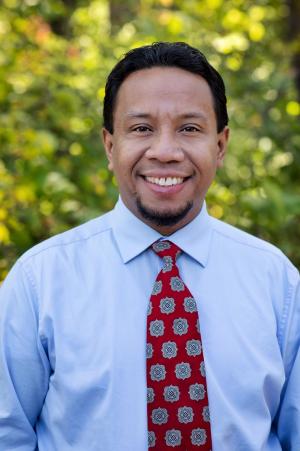
English is not my first language. The first time I went to an English-speaking school was in Baguio City, Philippines, in 2003. I was nervous about learning in a language that is not my own. Would I manage? And what if I failed? These questions haunted me as I boarded the airplane from Jakarta to Manila. It’s the first semester, and so I take a systematic theology class. As the professor is teaching, a question burns in my mind, something I really want to ask him about. I gather my courage and raise my hand. The professor sees me. He turns to me and says, “Eka, do you have a question?” But as he turns his—and everyone’s—attention to me, I feel as if the world is spinning beneath me. The words I’d planned vanish from my brain. My feet shake. My whole body explodes with heat. I’m nervous and embarrassed because everyone’s looking at me, waiting to hear my question. I try to open my mouth but no longer know how to express my question in English. Seeing me struggle, the professor patiently says: “It’s okay. You can do it!” Knowing that he understands my linguistic limitation helps, but it nevertheless takes me a few minutes to articulate my question. The memory of this experience still vividly reminds me that learning in another language is not at all easy. It takes a lot of bravery to do it. Fast forward to 2017. I am still pursuing my doctoral degree at Vanderbilt University. But on this day I’m teaching a Sunday school class at a local church. A guest (a white man) is in the class, wanting to learn from me. While I’m talking, I notice his discomfort. Finally, he speaks up: “I don’t understand what you’re saying. Your accent is too strong.” I’m totally embarrassed. I pause and collect myself, then smile and continue. I never saw him again. Not long after this experience, I have a conversation with an established scholar who teaches at a major seminary in the US. He is from an Asian country, and he too speaks English with an accent. He tells me that in his first years of teaching, some students did not want to take his class because they didn’t like his accent. Time to flip the script! When I was in the Philippines, I met a man from Alabama who spoke with a pronounced Southern accent. Sometimes that accent, plus the speed at which he spoke, meant that I couldn’t understand what he was saying. Accent can indeed be a barrier to communication. Recognizing this taught me to respect this Alabamian and his linguistic background. Instead of expecting or even forcing him to speak with an Indonesian, Filipino, or Korean accent (which I readily understand), I pushed myself to accept his otherness and his difference, and over time I learned to understand his speech better. Rosina Lippi, a novelist and linguist, once told the Mercury News, “[A]ccent is often overrated as a source of communication problems… Often, what people perceive to be an accent problem is really due to other biases.”[1] Indeed. Linguistic prejudice is real. People who study language know that everyone has an accent. English accents take all kind of forms, even among native English speakers. An Australian accent is different from a Singaporean accent or an American accent. However, some accents are considered acceptable, and others are not. Who determines the acceptability of an accent? The issue is not whether one has an accent or not, but whether one’s accent is perceived as desired, or is frowned upon as “less than,” “foreign,” “uneducated,” or “uncivilized.” It is merely the hearer’s unfamiliarity with it, their discomfort, their sense of superiority, that deems an accent to be “foreign.” Now of course teaching requires oral linguistic performance. A teacher has to stand in front of the class and speak. In this context, accent in teaching is inevitable. It is an embodied performance because it involves the movement of one’s tongue, the intonation of one’s voice, and one’s breathing. Since our body is habituated in a certain linguistic environment, speaking with an accent is entirely inevitable. All speech is accented, always. Embodied teaching means teaching with an accent. In this sense, a teacher comes with their own unique accent. The question is: What accent is acceptable in a classroom? I teach at a seminary whose students come from many different places. We have a few international students as well. Whose accent should I use as a teacher? A Nigerian student from South Africa has a very different accent than a student from New York or a student from Tennessee. Should I use a Nigerian accent or a New York accent or a Southern accent? I decided to stay with my own accent, one that is shaped by Bahasa Indonesia underneath my English performance. Like Josephus, the first-century Jewish historian who admitted that he had a hard time attaining precision with the Greek accent because of the habit of his mother tongue (Jewish Antiquities XX.263–4), I too feel such a distance with English, and the habit of my mother tongue affects my English pronunciation. I have learned to embrace and refuse to be embarrassed by it. My accent is who I am. My accent tells a story of migration from Indonesia to the United States. It signifies the presence of otherness in my classrooms. I suggest that instead of seeing accent as a barrier to communication—for example, when students refuse to embrace the otherness of their teacher’s accent—teaching with an accent can also enrich our classrooms. Teaching with an accent clearly embodies otherness in the classroom. Such otherness challenges students to examine their linguistic prejudices or biases. It is not only the face of the other, but also the sound of the other that comes to them. It transgresses their familiarity, their bubble. It prompts them to ask themselves: Do I need to embrace it or reject it altogether? And in asking that, perhaps that difference will also prompt them to recognize that in rejecting or embracing an other accent, they are also rejecting or embracing an other self, an other’s story. For accent represents one’s story. As a legal scholar, Mari J. Matsuda, puts it: Your accent carries the story of who you are—who first held you and talked to you when you were a child, where you have lived, your age, the schools you attended, the languages you know, your ethnicity, whom you admire, your loyalties, your profession, your class position: traces of your life and identity are woven into your pronunciation, your phrasing, your choice of words. Your self is inseparable from your accent. Someone who tells you they don’t like the way you speak is quite likely telling you that they don’t like you.[2] To put it differently, the act of shutting down an accent is a violent erasure of one’s story, one’s identity, one’s self. Students’ reaction to a teacher’s accent will tell whether or not they are willing to welcome diverse stories, backgrounds, and knowledge productions. A teacher’s accent can function as a catalyst for the classroom’s open engagement with difference. [1] Mike Swift, “How Accents Define Us,” The Mercury News (blog), April 15, 2007, https://www.mercurynews.com/2007/04/15/how-accents-define-us/. [2] Mari J. Matsuda, “Voices of America: Accent, Antidiscrimination Law, and a Jurisprudence for the Last Reconstruction,” The Yale Law Journal 100, no. 5 (1991): 1329.
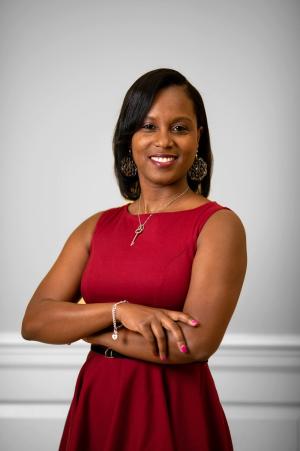
Take a deep breath in … and exhale. This has been a recurring practice in my classrooms lately. Taking a moment to breathe – both physically and pedagogically. What started as an interesting idea to shape my classes in a rhythm of breath, has proven to be a welcomed experience for students throughout the landscape of a semester of communal learning – breathing together. Both the actual practice of slowing down at the start of class, centering, and taking a moment to breathe before or after diving into class content; as well as the movement through learning as a breath – an inhale of information, and an exhale of reflection – cultivate a unique rhythm of engagement, communal connection, and sustained learning. This idea of intentionally infusing breath into the classroom has fascinated me for some time with its creative possibilities. In its development, I have found that this breath-centered pedagogy creates space for one’s humanity and lived-experiences to be present and valued in the learning process. For example, in my most recent class, students expressed feelings of freedom in learning, being seen and heard, and recognizing a community that held space for their theological processing. The classroom became a place of embodied learning that welcomed vulnerability, risk-taking, and difference. At the same time, it also required a willingness to be fully present in the process. Breathing was a primary part of ensuring this presence, with moments to breathe together at the start of class, after working with difficult content, and sometimes at the close of a class session. The breath-centered pedagogy I have developed is informed by time spent in actual breathwork practice led by a certified coach. From the lessons learned working with this coach, my approach to teaching holds three priorities: (1) model the practice of breath in the classroom, (2) make room to breathe, and (3) be open to what breath can create. In modeling the practice of breath and making room to breathe, my classes are shaped in a circular rhythm that includes information intake, processing, and reflection through creative modes of learning. There are breath weeks introduced at weeks five and ten of the semester, which provide a chance to slow down and think deeply in community. These weeks make room for us to breathe in learning and in life. They are points along the way to assess the progress of the class as a collective, while also making room to allow life to show up in the room, which provides insight to the wellness of the students beyond the classroom persona they put on to navigate institutional expectations. Breathing allowed them to let down guards and be freely themselves – even if only for a few hours of the day. The final priority is where I have witnessed the magic – being open to what breath can create. This past semester in my Womanist/Feminist Spirituality and Worship course, breath created community and connection, it empowered creativity and vulnerability, and it cultivated joy. Bodies in space learning together, who were allowed to breath, became a community that developed a connection across dialogue around ritual, sacramental theology, and women’s ways of worship. This community affirmed and celebrated one another, they laughed and cried together, and they developed constructive theologies around liturgical practice born from theological creativity and freedom that many of them were afraid to embrace. This was the power of breath for this community. So, what am I learning from this breath-centered pedagogy? While there is still room for fine-tuning the practice, there is so much potential in breathing together. I am learning that this practice of breathing must be mutual. I must breathe with the class, and not just facilitate the breath process. In breathing together, in shaping a class in a rhythm of breath, there must be room for flexibility because just like our natural rhythms of breath, depending on the activity or location, our rhythms of breathing change, and we must adjust in the moments to catch our breath, to find our breath, to pace our breath. So was the case in our learning. Finally, while not so much of a lesson but rather an observation, breath led to laughter, laughter led to joy, joy led to transformation (even in the smallest ways), and shared transformation led to deep learning. This is the impact of breath in the classroom. May we all be so inclined to breathe together. So again, take a deep breath in … and exhale.
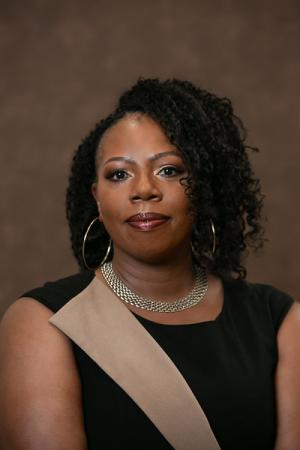
This semester I taught the Gospel of Luke for the first time. My class was a seminar style class with seven students who worked diligently through the Lucan text while also engaging various scholars and they ways that these scholars used a variety of methods for interpretation. Since most of my published works are in the Gospels of Mark and John, teaching the Gospel of Luke was a new experience for me. During the course of this class, my students dubbed me as their most “confessional” professor. At first, I disliked the term because, in my mind, I was still seeking to embody the detached state in my teaching approach which would have been very similar to many of the professors with whom I studied New Testament texts. However, I had to ask myself why I was seeking to be detached within this particular pedagogical space. Upon reflection, I realized that the makeup of the class was one reason I wanted to appear detached. In my Gospel of Luke class, I had a variety of students ranging from budding womanist and feminist students to strictly complementarian male church leaders. As an African American woman professor, I have found in my years of teaching that strictly complementarian male church leaders often avoid my classes just because of my embodied presence. Because I knew that some of our conversations could become tense, I wanted to remain a detached presence even though my embodied presence oftentimes cannot afford to be detached. My particular embodied presence makes a difference in the ways that students receive information. Realizing this, I embraced the idea of being confessional—with some caveats. Most scholars understand confessional approaches to religious education as not valuing differing interpretations of understandings of scripture and theological concepts.[1] Confessional scholars often believe that different opinions cannot be valued and accommodated within confessional spaces. I would offer something slightly difference and nuanced. Turning to the work of Patricia Hill Collins, I argue that even though I am an ordained minister and seminary professor, my “confessions” are not rooted in the above-referenced (and outdated) understandings of confession but are confessional with a hint of testimonial authority. Collins argues that academia is influenced by various forms of critical analysis. Citing critical race theory, Collins discusses that said theory was advanced by legal scholars, practitioners, and activists while drawing upon dual theoretical traditions: specifically, structural analysis within the social sciences as well as narrative traditions within the humanities.[2] Collins further explains that the narrative traditions stem from the testimonial authority of storytelling. The recipients of the worst practices within the legal system told their stories as a way to bring about change to the system. As I reflect on what I am calling “Womanist Confession as a Form of Embodied Teaching,” I realize that even as I explain the various theories and methods of biblical interpretation, most of my examples and discussion prompts stem from my own life and being as a Womanist New Testament scholar. Similar to Collins’ understanding of the testimonial authority of storytelling, I often reiterate stories of the worst practices of biblical interpretation that continue to gaslight within traditional confessional spaces. By doing this, Scholars can bring about change in the academic study of the Bible. For example, when studying Mary’s Magnificat in Luke 2, I prompted the class to think about questions of consent, knowing that my own experiences of sexual assault lie in the background of my questions. While I may not explicitly tell stories about such experiences, I do allude to and testify about different experiences in my life and how male pastors have gaslit me into believing that the sexual assault was not as bad as it was.[3] Statistics also help in explaining the importance of asking these questions. According to the CDC, one in four women experience a rape or attempted rape in their lifetime.[4] There were five women in my class so that means that two of us has had such an experience. How does the conversation of Mary’s “consent” play out when we ask these questions while reading the biblical text? Oftentimes, male students do not think that such questions belong in the conversation but, as I argue to them, preachers may miss more than half of their congregation if they ignore such questions. As pedagogues, we are not objective, dispassionate, and detached presences in our classrooms. I hope that each and every one of us continues to interrogate our own identities and our own stories as we enter the classroom space. [1] L. Philip Barnes, Education, Religion and Diversity: Developing a New Model of Religious Education (New York, NY: Taylor & Francis Group, 2014). [2] Patricia Hill Collins, Intersectionality as Critical Social Theory (Durham, NC: Duke University Press) 90. [3] See https://www.christianitytoday.com/news/2019/june/sbc-caring-well-abuse-advisory-group-report.html. [4] See https://www.cdc.gov/violenceprevention/sexualviolence/fastfact.html.
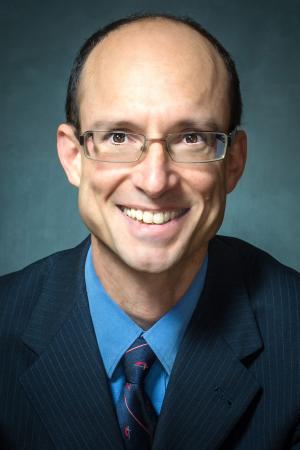
Trauma. Is there any more apt word for the past few years? COVID-19, social distancing, racialized violence, political insurrection—these are just a few of the collective traumas affecting our lives. I’m sure each of us can name additional layers from a personal standpoint, from broken relationships to untimely deaths. So, the need for trauma-informed pedagogical interventions in the classroom seemed uncontestable and urgent when I wrote a small project grant proposal to the Wabash Center in spring 2021. We knew our students were hurting. We were aware of individual trauma histories before social distancing shut down our in-person classrooms. Then COVID hit. Since mid-March 2020, significant portions of our online instruction were dedicated simply to checking in with students, connecting with them emotionally and spiritually, before engaging with them intellectually. Then, George Floyd was murdered by a white police officer in May 2020. Racialized violence hit our students and their communities hard; 35 percent of our student body is African American. We sought trauma-informed pedagogical strategies to help us. The project, “Trauma-Informed Classroom Teaching at Lancaster Theological Seminary,” was intended to equip our faculty with skills, tools, and strategies to optimize the classroom learning experience of students with existing and ongoing trauma histories. I learned that this is no small project. And neither is trauma-informed care reducible to tools and strategies—it involves our whole, embodied selves and the entire community. We began by engaging a Trauma Informed Specialist to provide our faculty a conceptual introduction to trauma and trauma-informed care. This was an easy ask since Lancaster County is committed to becoming a trauma-informed community. In preparation for the workshop, the specialist, Melanie Snyder, invited the seminary to commit to becoming a trauma-informed organization through a program sponsored by her employer, Penn Medicine Lancaster General Health. It was not a good time for Lancaster Seminary to commit to this larger goal. Too much was in flux institutionally, including a combination with Moravian University, for us to look beyond our immediate classroom needs. Snyder’s workshop, “Understanding Trauma, Resilience, and Trauma-Informed Care,” provided a robust introduction for our full-time faculty, some adjuncts, and a select few staff persons. The three hours flew by, equipping us with the basic vocabulary and concepts necessary to talk about trauma. My first inkling that this initiative would not remain confined to the classroom was when someone remarked how valuable the presentation was and asked why the entire staff had not been invited to participate. She was right. Trauma-informed care is a community-wide effort. Our work on classroom pedagogy began in earnest with a workshop by Oluwatomisin (Tomi) Oredein of Brite Divinity School in October 2021. She taught a liberative approach to our individual preparations to create and implement one trauma-informed pedagogical strategy in our classroom during the academic year. We discussed how diverse experiences of race shape the trauma and resilience of individuals. We also examined how we bring our entire, embodied selves to the classroom as instructors, including our racial biases, experiences, and personal trauma histories. As one participant noted, “Trauma-informed pedagogy requires building relationships of trust with students, and to do this, I must be appropriately vulnerable.” Acknowledging our own difficulties over the past two years was essential to this effort. Many faculty, as has been well-document, were suffering their own traumas. As instructors, we had to grapple with “The Truth of These Matters . . . .”: we were worn down, some of us barely hanging on, and we had little bandwidth for innovating, improvising, and implementing new pedagogical strategies. A mid-year listening session with students informed the faculty of some of the struggles students were having and reminded us that we were all in it together. Again we learned that trauma impacts, and trauma-informed care requires, the work of the entire seminary community. During the final workshop of our 18-month initiative, Stephanie Crumpton of McCormick Theological Seminary led us in a discussion of what we had accomplished, areas of growth, and next steps. Individual faculty members had succeeded, to greater or lesser degrees, in testing new trauma-informed pedagogical interventions in the classroom (informed by the resources below). We understood we had a long way to go. Crumpton observed that our faculty had succeeded in become trauma-aware, the first step in becoming trauma-informed, and perhaps even becoming a place of healing centered engagement. The next steps would involve students, staff, and all members of our seminary. We are on a journey from classroom to community. Select Resources on Trauma-Informed Pedagogy Crumpton, Stephanie M. “Trigger Warnings, Covenants of Presence, and More: Cultivating Safe Space for Theological Discussions About Sexual Trauma.” Teaching Theology & Religion 20 (2017): 137–47. Tinklenberg, Jessica L., ed. “Trauma-Informed Pedagogies in the Religious Studies Classroom.” Special Issue, AAR Religious Studies News, Spotlight on Teaching (March 2021). https://rsn.aarweb.org/spotlight-on/teaching/trauma-informed-pedagogies/editors-introduction. Wabash Center Blogs. “Teaching and Traumatic Events” series. (2018). https://www.wabashcenter.wabash.edu/category/teaching-and-traumatic-events/. (See especially posts by Lewis and McGarrah Sharp) Wabash Center Blogs. “Teaching and Learning During Crisis” series. (2020). https://www.wabashcenter.wabash.edu/category/teaching-and-learning-during-crisis/. (See especially posts by Lee, Oredein, Rideau, and Silva-McCormick) Wabash Center’s Podcast Series: Dialogue on Teaching. “When Trauma Touches the Teaching Experience with Dr. Lisa Cataldo.” (2021). https://www.wabashcenter.wabash.edu/resources/trauma-informedteaching/
Wabash Center Staff Contact
Sarah Farmer, Ph.D
Associate Director
Wabash Center
farmers@wabash.edu